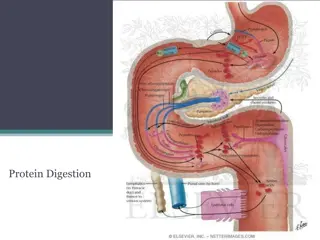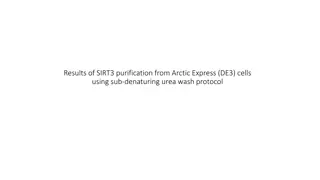Urea in Bio-systems
Urea, an organic compound synthesized in the liver, plays a vital role in protein metabolism and nitrogen excretion in the body. Elevated or low urea levels can indicate various health conditions. Learn about the clinical significance, limitations, and testing procedures of urea as an indicator of renal function. Explore the principle behind urea testing and its importance in medical diagnostics.
Download Presentation

Please find below an Image/Link to download the presentation.
The content on the website is provided AS IS for your information and personal use only. It may not be sold, licensed, or shared on other websites without obtaining consent from the author.If you encounter any issues during the download, it is possible that the publisher has removed the file from their server.
You are allowed to download the files provided on this website for personal or commercial use, subject to the condition that they are used lawfully. All files are the property of their respective owners.
The content on the website is provided AS IS for your information and personal use only. It may not be sold, licensed, or shared on other websites without obtaining consent from the author.
E N D
Presentation Transcript
Exp7 UREA Bio-systems Kit
Definition Urea or carb-amide is an organic compound with the chemical formula (NH2)2CO. The molecule has two amine (-NH2) groups joined by a carbonyl (C=O) functional group.
Urea is synthesized in the liver as a by-product of the de-amination of amino acids so it is the main end product of protein metabolism in the body. Its elimination in the urine represents the major route for nitrogen excretion (cleared from the blood by the kidney into the urine).
Clinical Significance *Elevated urea seen: -As a result of a high protein diet -Increased protein catabolism -After gastrointestinal hemorrhage -Mild dehydration -Shock and heart failure -Treatment with gluco-cortcoids(pre-renal uremia). -Diseases that compromise the function of the kidney often lead to increased blood levels of urea, as measured by the blood urea nitrogen (BUN) test
*Low urea level:(Not common) They can be seen in severe liver disease or malnutrition but are not used to diagnose or monitor these conditions. Low urea levels are also seen in normal pregnancy.
The usefulness of urea as an indicator of renal function is limited by: The variability of its plasma conc. As a result of non-renal factors So, we can t depend on a single test *Specimen: Serum or plasma (heparinized sample is recommended) Urine, dilute urine 1/50 with DW before measurement
Principle Urease Urea + H2O 2NH4 + CO2 NH4 + Salicylate + NaCIO Nitroprusside Indophenol The rate of formation of color is proportional to the urea concentration in the sample
Procedure Blank Std sample Rgt.A-ml 1 1 1 Std- l --- 10 --- Sample- l --- --- 10 Mix & incubate for 10 min at RT OR 5min at 37 C Rgt.B-ml 1 1 1 Mix & incubate for 10 min at RT OR 5 min at 37 C Read A at 600nm against blank and color will stable for 2hrs
Calculation A test X conc. of Std(50mg/dl) = conc of urea (mg/dl) A Std *Normal Range for adult: 15-39 mg/dl Neonatal has lower urea than adult Over 60 years will be higher Conc. of urea tend to be slightly higher in males than females
Limitation -Lipemia & high bilirubin will not interfere. -Hemolysis with elevated ammonia will interfere -Some drugs may interfere























